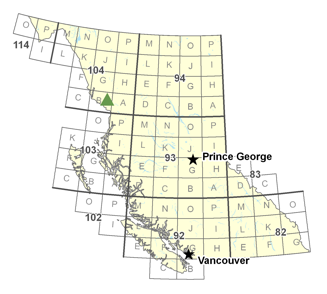Summary
 Eskay Creek represents an unusual precious metal-rich, polymetallic volcanic-hosted sulfide and
sulfosalt deposit located in the Iskut River area, British Columbia. The bulk of the mined-out deposit consisted of stratiform clastic beds and laminations of commonly graded sulfide and sulfosalt debris that were hosted by a thick interval of carbonaceous mudstone overlying felsic volcanic rocks.
Eskay Creek represents an unusual precious metal-rich, polymetallic volcanic-hosted sulfide and
sulfosalt deposit located in the Iskut River area, British Columbia. The bulk of the mined-out deposit consisted of stratiform clastic beds and laminations of commonly graded sulfide and sulfosalt debris that were hosted by a thick interval of carbonaceous mudstone overlying felsic volcanic rocks. The objective of this research is to provide the first detailed description of the hydrothermal alteration of the carbonaceous host rocks of this unusual deposit. The study primarily focuses on a detailed characterization of the carbonate alteration associated with comparably low-temperature fluid flow in the hanging-wall of the deposit. Detailed petrographic, microanalytical, and isotopic studies will be conducted to constrain the relative timing of carbonate formation and to test for compositional variations defining mappable zoning patterns that can be recognized up to tens to hundreds of meters from the orebodies.
Based on the detailed mineralogical investigations, a set of criteria will be devised that allows routine vectoring towards precious metal-rich massive sulfides that are hosted by carbonaceous mudstone. The results of the project will have near-term impacts on exploration for Eskay Creek-type deposits in British Columbia. The project will also contribute to a more accurate and comprehensive description of this important deposit type by providing new information on the properties of the mineralizing fluids and their interaction with the carbonaceous host rocks.